UCT Prague
Department of Inorganic Technology
Technicka 5
166 28 Praha 6
Jana Jiroušová
e +420 - 22044 3801
b jana.jirousova@vscht.cz
In the first week of the winter semester, from 15 to 19 September 2025, traditional excursions for students of the Master's study program in Chemical Technology took place. The aim was to provide students with insight into the operation of major industrial enterprises and to allow them to experience real chemical production processes firsthand.
During the five-day program, students from the Department of Inorganic Technology visited five important companies active in the fields of chemical and materials engineering:
The excursions offered students the opportunity to learn about modern technologies, industrial processes, and practical applications of their theoretical knowledge.
We would like to express our sincere thanks to all participating companies for their warm welcome, their time, and the valuable experience they provided to our students.
On Wednesday, May 14, 2025, students of the master's degree program Membrane Engineering for Sustainable Development (MESD) took an excursion to the company MEGA a.s. in Stráž pod Ralskem. There, they learned about the production of membranes and their industrial applications. Thank you for the interesting professional program.
Ing. Tomáš Jedlička was awarded the HYTEP prize for his excellent diploma thesis "Inkjet-printed catalyst layers for PEM fuel cells" in the field of hydrogen and hydrogen technologies. This prize was awarded during the Hydrogen Days 2025 conference, which took place on 19-21 March 2025 in Prague. Ing. Tomáš Jedlička was also awarded for the best poster in the student section at this conference.
Double congratulations Tomáš!
Ing. Martin Jirásko won a prestigious award at the 13th annual Metrohm Czech Republic competition on February 12, 2025 in Prague for the best publication by a young electroanalytical chemist under 35 years. Martin received the award for his publication A sustainable process for electrochemical production of 2-Iodosylbenzoic acid in the Journal of Environmental Chemical Engineering.
Congratulations.
Prof. Prashant V. Kamat
(John A Zahm Professor of Science), email:pkamat@nd.edu
Radiation Laboratory, University of Notre Dame, Notre Dame, Indiana, USA
Prashant V. Kamat is a Rev. John A. Zahm, C.S.C., Professor of Science in the Department of Chemistry and Biochemistry and Radiation Laboratory at the University of Notre Dame. He is also a Concurrent Professor in the Department of Chemical and Biomolecular Engineering. Professor Kamat has for more than three decades worked to build bridges between physical chemistry and material science to develop advanced nanomaterials that promise cleaner and more efficient light energy conversion. He has published more than 500 scientific papers that have been well recognized by the scientific community (85000 citations, h-index 146 –Source Web of Science). Thomson-Reuters has featured him as one of the most cited researchers each year since 2014 (2014 -2023). He is a Fellow of ACS, ECS, MRS and AAAS. He is also Pravasi Fellow of the Indian National Science Academy. He is currently serving as the Editor-in-Chief of ACS Energy Letters.
Lecture room: University of Chemistry and Technology Prague, building A, Uhelna – ground floor.
Thursday, 19th September 2024
13.00: Light energy conversion with semiconductor nanostructures, from fundamentals to applications
14.30: Harvesting light energy with perovskite nanocrystals. Energy versus Electron transfer
Friday, 20th September 2024
10.00: Electrocatalytic and photocatalytic processes for energy applications
11.00: Informal discussion with students and researchers– two topics
Prashant V. Kamat
Department of Chemistry and Biochemistry and Radiation Laboratory, University of Notre Dame, Notre Dame, IN46556, USA
Semiconductor nanostructures are finding new ways to design light energy conversion devices (e.g., thin film solar cells and light emitting devices). The decreased consumption of energy during the manufacture and the lessened use of semiconductor materials lowers the overall carbon footprint with energy payback time less than a year for such devices. The early studies focused on the synthesis of various semiconductor nanostructures and exploration of their size dependent optical and electronic properties. Careful engineering efforts in recent years have led to their integration in high efficiency thin film solar cells. Metal halide perovskite solar cells, in particular can now deliver efficiencies greater than 26%, thus matching the power conversion efficiency of silicon solar cells. In addition, semiconductor nanostructure-based assemblies also provide new ways to generate solar fuels (e.g., H2 generation). Unlike solar cell devices, photocatalytic processes are yet to deliver conversion efficiencies and stability that can make them compatible for practical applications. Understanding the limitations imposed by interfacial charge transfer processes remains a key to further advance photocatalytic systems for chemical energy storage. Recent developments in utilizing semiconductor nanostructures for light energy conversion and storage will be discussed.
Prashant V. Kamat
Department of Chemistry and Biochemistry and Radiation Laboratory, University of Notre Dame, Notre Dame, IN46556, USA
Surface interaction of chromophore or redox active molecule which dictate the efficiency of energy/electron transfer, plays an important role in realizing photocatalytic and optoelectronic applications. Metal halide perovskite nanocrystals are interesting in the sense that they can either transfer energy or selectively transfer electrons or holes to the adsorbed molecules.1,2 The presentation will focus on two specific scenarios of the flow of energy and electron processes in CsPbX3 (X= Br, I) nanocrystal-molecular hybrids. The energy transfer is probed through three moleculr acceptors – rhodamine B (RhB), rhodamine isothiocyanate (RhB-NCS), and rose Bengal (RoseB), which contain an increasing degree of heavy atom pendant groups. Electron and/or hole transfer from excited CsPbX3 nanocrystals to a molecular relay present near the interface offers another avenue to directly convert light energy into chemical energy. Such interfacial electron transfer of semiconductor nanocrystals has been widely explored in photocatalytic processes. A basic understanding of the fundamental differences between the two excited deactivation processes (energy and charge transfer) and ways to modulate them should enable design of more efficient light harvesting assemblies with semiconductor and molecular systems.
References:
Prashant V. Kamat*
Department of Chemistry and Biochemistry and Radiation Laboratory, University of Notre Dame, Notre Dame, IN46556, USA
In recent years new opportunities have emerged in photocatalytic and electrocatalytic hydrogen evolution and CO2 reduction. Design of new photocatalysts and electrocatalysts offer new opportunities to tackle the energy and environmental issues. The talk will focus on identifying new opportunities in electrocatalytic and photocatalytic applications for energy conversion processes. Artifacts encountered while conducting these experiments will also be discussed. Some of these artifacts include contribution of sacrificial donor oxidation to overall products,1,2 photocatalyst degradation/transformation,3,4 impurity effects,5 counter electrode reactions6 etc. Ways to assess the merits of photocatalytic experiments and establish the right reaction mechanism will be discussed.
References:
2.Kamat, P. V.; Jin, S. ACS Energy Lett. 2018, 3, 622-623.
3. Jin, S. Are Metal Chalcogenides, ACS Energy Lett. 2017, 2, 1937-1938.
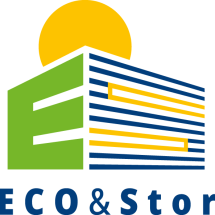

Ing. Tomáš Imrich received the "BEST ORAL RELATING TO MATERIAL RESEARCH" award for his contribution at the 12th European Conference on Solar Chemistry and Photocatalysis: Energy and Environmental Applications (SPEA12), which took place on 17–21 June 2024 in Belfast. Ing. Imrich succeeded with his contribution "Bromine generation on various photoanodes: α-Fe2O3, Fe2TiO5, WO3 and TiO2".
Congratulations!
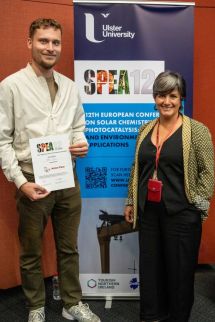
Ing. Nela Adamová won the HYTEP prize for her excellent diploma thesis "Influence of electrolyte composition on solid oxide cell properties" in the field of hydrogen and hydrogen technologies. This prize was awarded during the Hydrogen Days 2024 conference, which took place on 20-22 March 2024 in Prague.
Congratulations!
Ing. Michaela Plevová, Ph.D. won the 5th place at the 25th edition of the prestigious Werner von Siemens competition in the category of the best dissertation for her thesis Catalyst coated membranes for alkaline water electrolysis. The Werner von Siemens Prize not only aims to motivate exceptional talents among students and researchers, but also to strengthen the positive attitude of students and the general public towards science and, last but not least, to highlight the tireless work of teachers, which is often unjustly neglected. With its scope, the amount of financial rewards and tradition, our competition is one of the most important independent initiatives of this kind in the Czech Republic.
Congratulations.
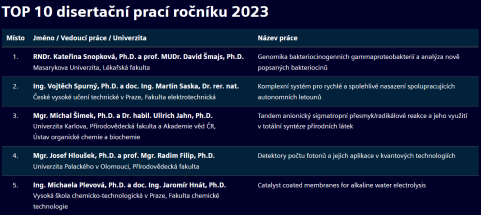
Ing. Tereza Bautkinová won a prestigious award at the 13th annual Metrohm Czech Republic competition on February 7, 2024 in Prague for the best publication by a young electroanalytical chemist under 35 years. She received the award for her publication Introducing titanium hydride on porous transport layer for more energy efficient water electrolysis with proton exchange membrane in the Journal of Power Sources.
Congratulations.
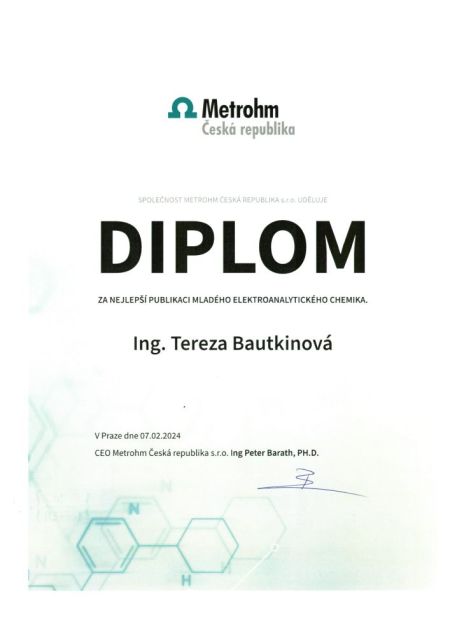
The Institute of Inorganic Technology is actively involved in the Jan Ámos Komenský Operational Programme within the Top Research Call with the Eco&Stor project. The total support for this four-year project is CZK 500 million. CZK.
Prof. Bouzek, the main coordinator of the project, commented on the project

The University of Chemistry and Technology, Prague (UCT Prague), in a resplendent display of international collaboration and educational excellence, hosted the esteemed Kyutech Autumn School from October 21 to 27, 2023. This event marked a significant milestone in the ongoing partnership between VŠCHT and the Kyushu Institute of Technology (Kyutech), Japan.
Under the expert guidance of Professor Josef Krýsa from the Institute of Inorganic Technology and in coordination with UCT Prague's Department of International Relations, the autumn school provided an immersive learning experience for Japanese students. This year's event symbolized a triumphant return following a four-year hiatus due to the Covid pandemic, reflecting a renewed commitment to global educational exchange.
The autumn school, a continuation of the successful sessions held in 2018 and 2019, witnessed participation from 14 esteemed students from Kyutech. They were accompanied by distinguished Professors Teruhisa Ohno and Mitsuru Kitamura. The curriculum was meticulously designed to encompass Theoretical and Environmental Aspects of Chemical Technologies. UCT Prague's faculty, including Professor Josef Krýsa, Associate Professor Martin Paidar, Ing. Michal Baudys, and Ing. Šárka Paušová, played a pivotal role in delivering this comprehensive educational experience.
A highlight of the program was an innovative Workshop where both Czech and Japanese educators and students had the opportunity to present and discuss their cutting-edge research topics. This academic exchange culminated in an informal gathering at the café Carbon, fostering a sense of community and shared learning.
Complementing the academic pursuits were a series of cultural and exploratory activities, offering the students a rich taste of Czech culture and history. Visits to the iconic Estates Theatre, exploratory tours of Prague, an excursion to the Bernard brewery, and a trip to the silver museum and cathedral in Kutná Hora enriched the students' experience, blending education with cultural appreciation.
Looking ahead, UCT Prague eagerly anticipates the continuation of this fruitful collaboration, with plans already underway for the fourth iteration of the autumn school in the 2024/2025 academic year, to be hosted by Kyutech in Japan.
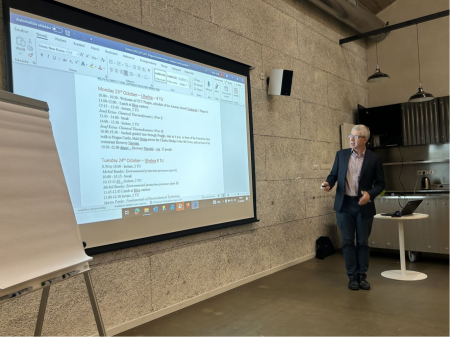
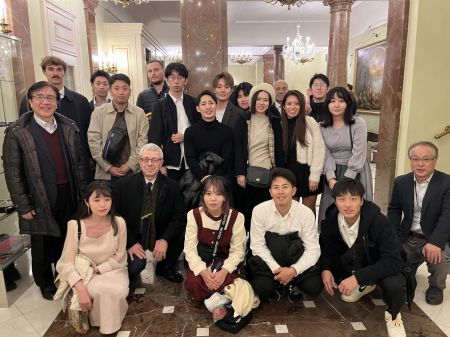
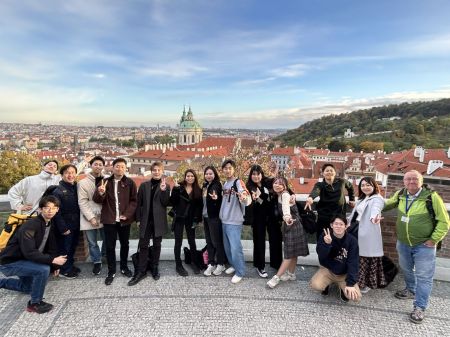
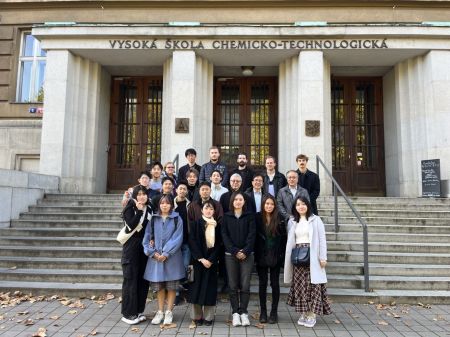
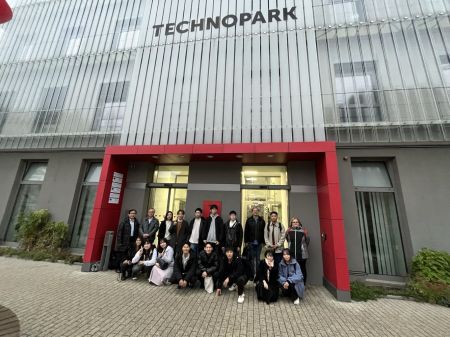
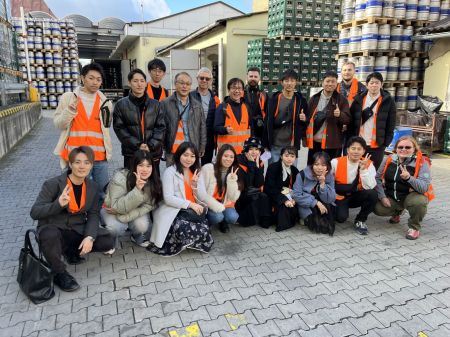
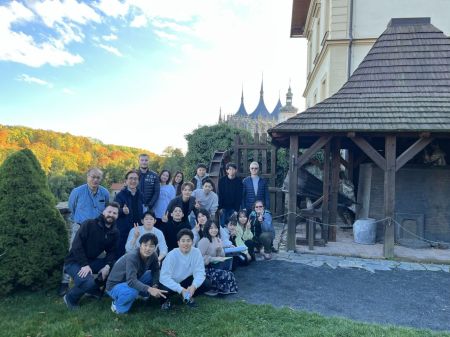
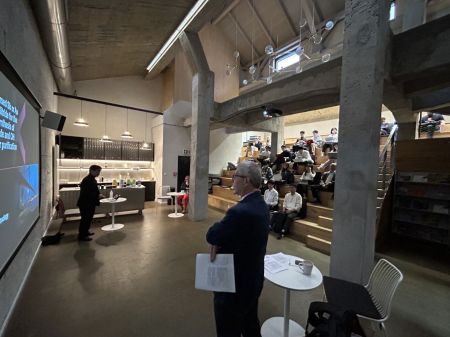
Ing. Daniel Budáč won the second prize for the best student poster at the 24th International Conference Advanced Batteries, Accumulators and Fuel Cells (ABAF24), which took place from 27-30 August 2023 in Brno. The conference was organized in collaboration with the International Society of Electrochemistry (ISE) and the Monatshefte für Chemie - Chemical Monthly. Daniel was successful with his contribution "Development of Structured Electrodes for Solid Oxide Electrolysis Cells".
Congratulations!
Ing. Miloslav Hala was awarded for the best student poster at the 13th International Conference on Hydrogen Technologies (HydrogenDays 2023), which took place from 29-31 March 2023 in Prague. Mirek was successful with his contribution "Performance Measurement of Inkjet Printed Catalyst Layers for PEM Fuel Cells".
Congratulations!
Eva Šrámková received the prestigious award of Metrohm Czech Republic on 18.5.2022 in Prague for the best publication of a young electroanalytic chemist under 35 years of age. She received the award for her publication Quantification of Electrocatalytic Activity of Glassy Carbon Electrode in the journal Electrochimica Acta.
Congratulations.
Ing. Michaela Plevová received an award for the best poster for her contribution titled “Preparation of catalyst coated membrane for alkaline water electrolysis: influence of the substrate and preparation method”. This poster was presented at the 12th European Symposium on Electrochemical Engineering (ESEE 2021) organized by the WPEE (Working Party on Electrochemical Engineering at EFCE) in collaboration with Wetsus. The conference was held online on 14-17. June 2021.
Congratulation!
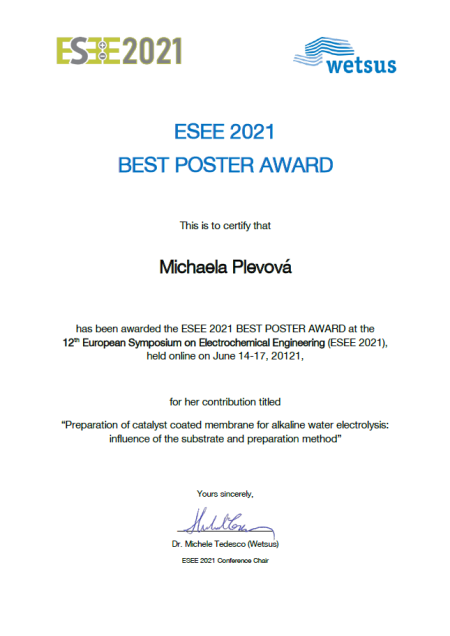
Ing. Martin Ďurovič won the award for the best poster at the Hydrogen Days 2021 conference, organized by the Czech Hydrogen Technology Platform. Due to ongoing measures against the spread of Covid-19, this conference was held online on 24-25 March. Martin succeeded with his poster "NiCoP cathode catalyst for electrochemical water splitting: Structural and electrochemical characterization".
Congratulation!
UCT Prague
Department of Inorganic Technology
Technicka 5
166 28 Praha 6
Jana Jiroušová
e +420 - 22044 3801
b jana.jirousova@vscht.cz

